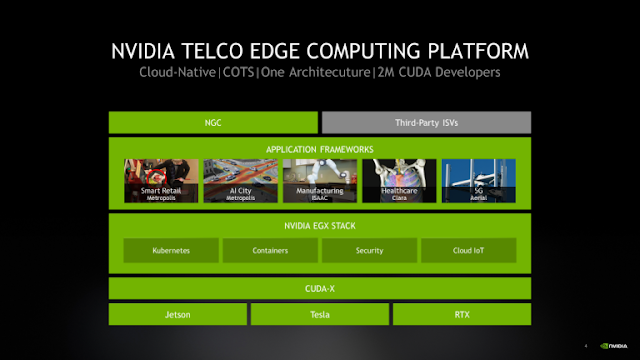There are compelling reasons for analyzing data at the network edge, where it is generated and captured, rather than sending all data to distant centers for analysis.
The rise of connected devices, Edge computing and the Internet of Things (IoT) has created an ever-growing flood of data that streams continuously into corporate and cloud data centers. To gain value from all of this data captured by sensors and IoT devices, organizations must put analytics tools to work.
Here is where a big question becomes even bigger. The process of transmitting data to distant data centers for analysis comes with challenges, from network latency and bandwidth limitations to security and compliance risks. Add to that the growing issue of the data that requires immediate analysis at the point of capture — for example, to enable an autonomous vehicle to respond instantly to a pedestrian stepping into the roadway. In use cases like these, the urgency for immediate responses is imperative.
Challenges like these build the case for analyzing data at the network edge, where the IoT devices are located and where intelligent systems can take actions based on the results of the analysis. In simple terms, we are talking about bringing the analytics to the data, rather than sending the data to the analytics. This is a point underscored in a Forrester study that examines how IoT deployments are driving analytics to the Edge.
“Many organizations have embraced internet-of-things (IoT) solutions to optimize operational processes, differentiate products and services, and enhance digital capabilities,” the Forrester study notes. “However, as companies deploy a diverse array of IoT projects and use cases — each with specific requirements — many encounter challenges with using centralized cloud-based and data center analytic strategies. To transform large streams of IoT data into insights in a fast, secure, and cost-effective way, organizations must revisit their IoT architecture, skills, and strategies.”
One of the keys to this shift is what Forrester refers to as “edge IoT for analytics” — a technique that takes analytic computations for certain Edge and IoT use cases out of the cloud or the enterprise data center and “moves it as close to the data sources as is necessary and feasible to enable real-time decisions, reduce costs, and mitigate security and compliance risks.”
A few definitions from Dell Technologies
◉ The Edge — exists wherever the digital world and physical world intersect and data is securely collected, generated and processed to create new value.
◉ The Internet of Things (IoT) — perhaps the purest possible expression of how the world is transforming from mechanical to digital. By digitally sensing the physical world, IoT transforms material things into streams of data, allowing people to sense and interact with them in entirely new ways to accelerate the pace of innovation.
◉ Edge computing — augments IoT by enhancing our ability to analyze IoT data and act on it in real time.
A broad range of use cases
The use cases for Edge and IoT span the gamut of operations for enterprises and public entities. McKinsey & Company illustrated this point in a report that identified 107 specific Edge use cases that enable “real-time decision making untethered from cloud computing’s latency.” The firm says these applications of Edge and IoT are not conceptual, noting that the firm identified 3,000 companies deploying these use cases today.
“By circumventing the need to access the cloud to make decisions, Edge computing provides real-time local data analysis to devices, which can include everything from remote mining equipment and autonomous vehicles to digital billboards, wearable health appliances, and more,” McKinsey says.
Let’s look at few examples of the way Edge and IoT are enabling better, faster decision-making and user services across a diverse range of use cases.
Digital cities
Around the world, cities are experiencing explosive growth. By 2050, nearly 70 percent of the world’s population will be concentrated in urban centers, up from 55 percent in 2018, according to forecasts from the United Nations. To continue to flourish, cities will need to adopt smarter approaches to managing population growth, safety, traffic, pollution, commerce, culture and economic growth.
Edge and IoT analytics can play a key role in better management of cities by making them more intelligent and self-reliant and enabling smarter citizen services. For example, with analytics at the Edge, cities can provide residents and businesses with real-time traffic information and navigation guidance that take into consideration weather, construction work and accident information fed from other Edge systems.
Here’s another example. Edge analytics can enable smart traffic management systems that automatically adjust the timing of traffic lights to help keep traffic flowing smoothly and reduce the pollution that comes with traffic jams. Even better, with analytics conducted at the Edge, cities can help ensure that services like these stay up and running even when network connections to cloud data centers go down.
Retail
In retail environments, Edge and IoT solutions enable merchants to combine data from many sources to enable seamless insight-driven customer experiences. With these solutions, retailers can deliver outstanding shopping experiences that are personalized from the moment customers walk through the door. The large volumes of data and the immediacy involved in this process makes this an inherently Edge and IoT solution.
Retailers are also making use of Edge and IoT solutions to analyze the retail environment to identify strengths and weaknesses, predict demand for bestselling products, and optimize inventory levels to help ensure that the right products are in the right place at the right time.
Edge and IoT solutions can also play an important role in surveillance of retail environments. In this use case, cameras capture video of shoppers and stream the footage to Edge gateways for analysis. With the right artificial intelligence tools in place, the Edge systems can automatically detect behaviors that are often associated with shoplifting, and then issue alerts to security personnel on the retail floor.
Healthcare and life sciences
With the proliferation of connected wearable medical devices, sensors, mobile apps and other new technologies, the movement of data in healthcare environments is changing in fundamental ways. At the same time, healthcare providers are using this data captured from the Edge and IoT for making greater use of AI and machine learning in diagnostic and patient care processes.
In this new world of healthcare, Edge and IoT solutions are essential. They help providers monitor the wellbeing of patients and devices remotely; keep track of patients, staff, equipment and inventory; and gather data for analysis. Collectively, these solutions help healthcare providers deliver smarter care, respond faster to health emergencies, and automate data collection for administrative mandates, such as those for compliance and reporting.
The growing importance of Edge and IoT solutions in healthcare is underscored by industry research that projects that the market for Edge and IoT in healthcare will exceed $500 billion by 2025 after expanding at an annual growth rate of nearly 20 percent over the forecast period.
Smart Manufacturing
Edge and IoT solutions are helping manufacturers improve product quality and factory yields by monitoring and controlling production lines in real time. With immediate feedback from smart systems, plant operators can spot emerging problems before they become actual problems, while continually optimizing processes.
Smart manufacturers, for example, are using AI and Edge-computing systems in conjunction with IoT data gathered by sensors to predict and avoid machine failure. The goal is to use predictive maintenance to prevent issues, resolve problems quickly and minimize operational downtime.
Here’s another example. Smart manufacturers are now leveraging the combination of sensor data, machine learning and advanced image recognition capabilities to automate the visual inspection and fault detection of products on the manufacturing lines. These intelligent systems trigger the automatic rejection of defective products from the production line.
Key takeaways
Today, there’s a tremendous amount of momentum for IoT and Edge computing, a point underscored by industry research. The research firm Strategy Analytics, for example, predicts that by 2025, nearly 60 percent of data will be processed in some form by Edge computing. As findings like these suggest, Edge computing and IoT-based solutions are the future — as well as the present.
So, does the rise of Edge analytics mean the cloud will go away? While some industry observers are making that case, at Dell Technologies, we disagree with this view. We believe that enterprises will continue to use public and hybrid clouds for storing large amounts of data, which can be used for data analytics and the training of machine learning models, while making use of Edge and IoT solutions, even Edge clouds, for applications that require more immediate responses from automated systems.



























